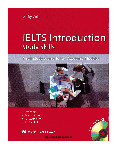













Preview text:
AGENDA: Advertising file MARKETING SWOT Comparisons
Favourite types of advertising
(Source: https://weirdomatic.com/8-of-the-most-off-the-wall-and-innovative-advertising-
ideas-ever-to-see-the-light-of-day.html, June 10th, 2020) 1. Overall objectives
By the end of this unit, students will be able to:
- discuss an advertising plan for a product
- talk about their favourite types of advertising
- talk about the SWOT of a company
- apply SWOT to choose an appropriate strategy or market 2. Key language knowledge
Vocabulary related to advertising advertise (v) / ædv rta z/ leaflet (n) t/
advertisement (ad/ advert) (n) opportunity (n) / p ti/ / sm nt/ persuade (v) /p d/ 42 | P a g e animated (adj) me t d/ persuasive (adj) /p s v/ beneficial (adj) f l/ pop-up (n) p p/ billboard (n) lb poster (n) p st (r)/ convince (v) /k ns/ press advert (n) /pres / effective (adj) / fekt v/ sample (n) endorse (v) / slogan (n) n/ exhibition (n) b n/ static (adj) k/ eye-catching (adj) kæt threat (n) / flyer (n) (r)/ TV commercial (n) /k m l/ identify (v) /a dent fa / ultimate (adj) lt m t/ word-of-mouth advert (n) informative (adj) / t v/ /w v ma / Language focus: Comparisons
1. Equality: is used to compare the things when they are equal in some way.
S + be (not) + as + adj/adv + as + (S + be) + O
Example: Samsung's billboards are as eye-catching as Apple's billboards.
2. Comparatives: are used to compare differences between two subjects.
Short Adjectives S + be + adj-er + than + N/pronoun Long Adjectives
S + be + more + adj + than + N/pronoun Examples:
- Many people think that print advertising is cheaper than radio advertising.
- Many people think that print advertising is more effective than radio advertising.
3. Superlatives: are used to compare somebody or something with the whole group. Short Adj
S + be + the + adj-est + N/pronoun Long Adj
S + be + the most + adj + N/pronoun
Example: TV advertising is the most attractive kind of advertising for children. 43 | P a g e 4. Double comparison
With same adjectives: The comparative and the comparative are used to show
a continual increase or decrease of a subject.
Short Adj S + V + adj-er + and + adj-er
Long Adj S + V + more and more + adj
Example: The weather gets colder and colder. Our coats help you keep warm and comfortable everywhere.
With different adjectives: The comparative, the comparative adjectives are
used to express increasing or decreasing returns.
The comparative + S + V, the comparative + S + V.
The more high-tech the car is, the more expensive the model will cost.
5. Multiple Number Comparison: is used with multiple numbers: half/ twice/ three times/ 20%, etc.
S + V + multiple number + as + much/many/adj/adv + (N) + as + N/pronoun.
Example: We had expected eighteen brands at the exhibition, but there were twice
as many as that number showed up. 3. Online learning checklist
Look at the list of online learning tasks below and tick the tasks you have completed. Online learning task Task focus Completed Vocabulary Presentation
Words related to advertising, SWOT - Presentation Task 1 Words - Word writing Task 2 Words - Matching Task 3 Words - Multiple choice Task 4 Words - Gap filling Task 5 Words - Gap filling Section test Words - Gap filling 44 | P a g e Grammar Presentation 1 Comparison - Presentation Presentation 2 Advert form - Presentation Task 1 Comparative - Gap filling Task 2 Superlative - Gap filling Task 3
Comparative and superlative - Multiple choice Task 4
Multiple numbers comparison - Multiple choice Task 5 Comparison - Gap filling Section test Comparison - Multiple choice Listening Task 1 Advertising - Gap filling Task 2
Advertising tips - Gap filling Task 3
Viral marketing - Multiple choice Task 4 Viral marketing - Gap filling Task 5
Advertising channels - True or False Task 6 SWOT - Answering questions Reading Task 1
Advertisement - Answering questions Task 2
Types of advertising - Answering questions Task 3
Types of advertising - True or False Task 4
Create advertisement - Summary completion Task 5 Website - Answering questions Task 6 SWOT - Answering questions Writing Task 1
Advertising - Sentence arrangement Task 2
Advertising - Sentence completion Task 3 Speech - Gap filling Task 4
Advertising - Sentence completion Task 5
Comparing - Sentence completion Task 6
Advertisement - Paragraph writing
4. Face-to-face class materials 45 | P a g e LESSON 1 TYPES OF ADVERTISING
Objectives: By the end of this lesson, students will be able to:
- discuss an advertising plan for a product
- talk about their favourite types of advertising Warm-up: Describing adverts
Work in groups of 5. Look at the adverts below, identify types of adverts and use
suitable adjectives to describe them. 46 | P a g e Activity 1: Guessing Game
Work in 4 groups. Guess the brands and the
products based on the advertisements. Activity 2: Comparing adverts
Work in groups of 4. Look at 3 different laptop advertisements, then make sentences to compare the adverts.
Activity 3: Discussing an advertising plan
You two are co-workers in the Marketing
Department of a company. Your company is
going to advertise a new product line for men.
Work in pairs. Make a conversation to discuss the suitable types of advertising for the
product, using the given information in the chart below. 47 | P a g e Student A Student B Greet
Greet. Ask A to discuss advertising plan Agree. Suggest: Newspaper ads
Disagree. Reason: not attract wide
Reason: cheapest type of adverts range of customers Suggest: Lifestyle magazine Disagree Reason: readers/ mostly women Suggest: TV commercial
Reason: more eye-catching/ other types Disagree Reason: too expensive Suggest: pop-ups via Internet Agree
Reason: cheaper, reach more people/ Agree TV commercial End the conversation End the conversation Activity 4: Free talk
Talk about your favourite type of advertising. Use the following suggestions:
- What type of advertising do you like?
- How is its visual appearance?
- Does it help your products reach a wide range of customers?
- How is its cost compared to other types of advertising?
- What are the suitable products to use this type of advertising? 48 | P a g e LESSON 2 SWOT
Objectives: By the end of this lesson, students will be able to:
- talk about the SWOT of a company
- apply SWOT to choose an appropriate strategy or market Warm-up: Getting to know SWOT
Work in 4 groups. Look at the questions in the Activity File on page 113, then put them into the appropriate column. STRENGTHS WEAKNESSES OPPORTUNITIES THREATS Activity 1: A case study
Work in pairs. Look at the case study of Dell Company and the given SWOT matrix on threats. 49 | P a g e
In the mid-1990s, Dell Computer used a SWOT analysis to create a strong business
strategy that has helped it become a key player in its industry value chain. Their SWOT results were: STRENGTHS WEAKNESSES
Ability to sell directly to consumers
Lack of close relationships with Lower costs than competitors computer retailers OPPORTUNITIES THREATS
Consumers desire for one-stop
Competitors stronger brand names shopping*
Competitors stronger relationships Consumers with computer retailers about product choices
Internet as a powerful marketing tool
*One-stop shopping: Customers can buy variety types of products or service in a shop
or a location that offers a multitude of services.
Activity 2: Discussing strategies
Work in pairs. Read the analysis of Dell case study and the given strategies. Discuss
and decide which strategy is appropriate for the company and explain. Analysis:
Dell identified its strengths in selling directly to customers and in designing its
computers and other products to reduce manufacturing costs. It acknowledged the
weakness of having no relationships with local computer dealers. Dell faced threats
from competitors such as Compaq and IBM, both of which had much stronger brand
names and reputations for quality at that time. Dell identified an opportunity by noting
that its customers were becoming more knowledgeable about computers and could
specify exactly what they wanted without having Dell salespersons answer questions
or develop configurations for them. It also saw the Internet as a potentially powerful marketing tool. 50 | P a g e Possible strategies: S1:
directly, advertise via leaflets and TV commercials S2:
products via phone and Internet
S3: Offer higher quality products (at higher price), create relationships with
retailers and sell products through them, but avoid using the Internet
Activity 3: Choosing an appropriate strategy
Imagine that you were working in the Marketing Department of Dell Inc. in the mid-
1990s and discussing a suitable strategy for the company. Make a conversation based
on the information from Activity 2. Student A Student B
Greet B and state the purpose of the Greet A and respond discussion
Give opinion: not good - low price is of the price
Agree and add idea: Internet has great
Give opinion: good - customers know
potential => use it to advertise
what they want => sell customized Ask about S2 computers
Agree and add idea: S2 takes advantage Agree and ask about S3 of Internet to advertise
Give opinion: poor choice, destroy
Agree and add idea: creating new strength, cause higher price
relationships with retailers - costly and may not effective
Agree to choose S2 for Dell and end the
Agree and end the conversation conversation 51 | P a g e




